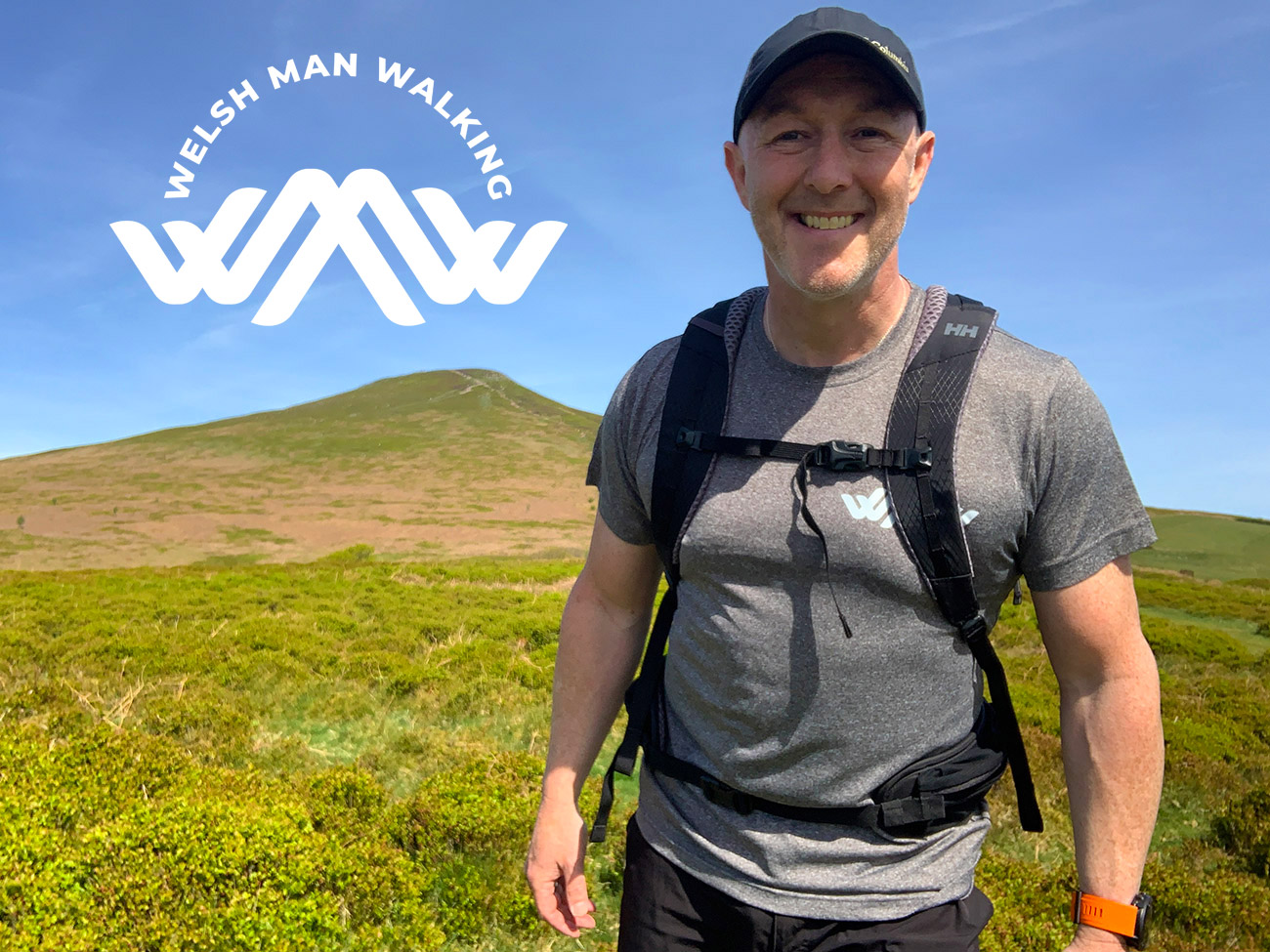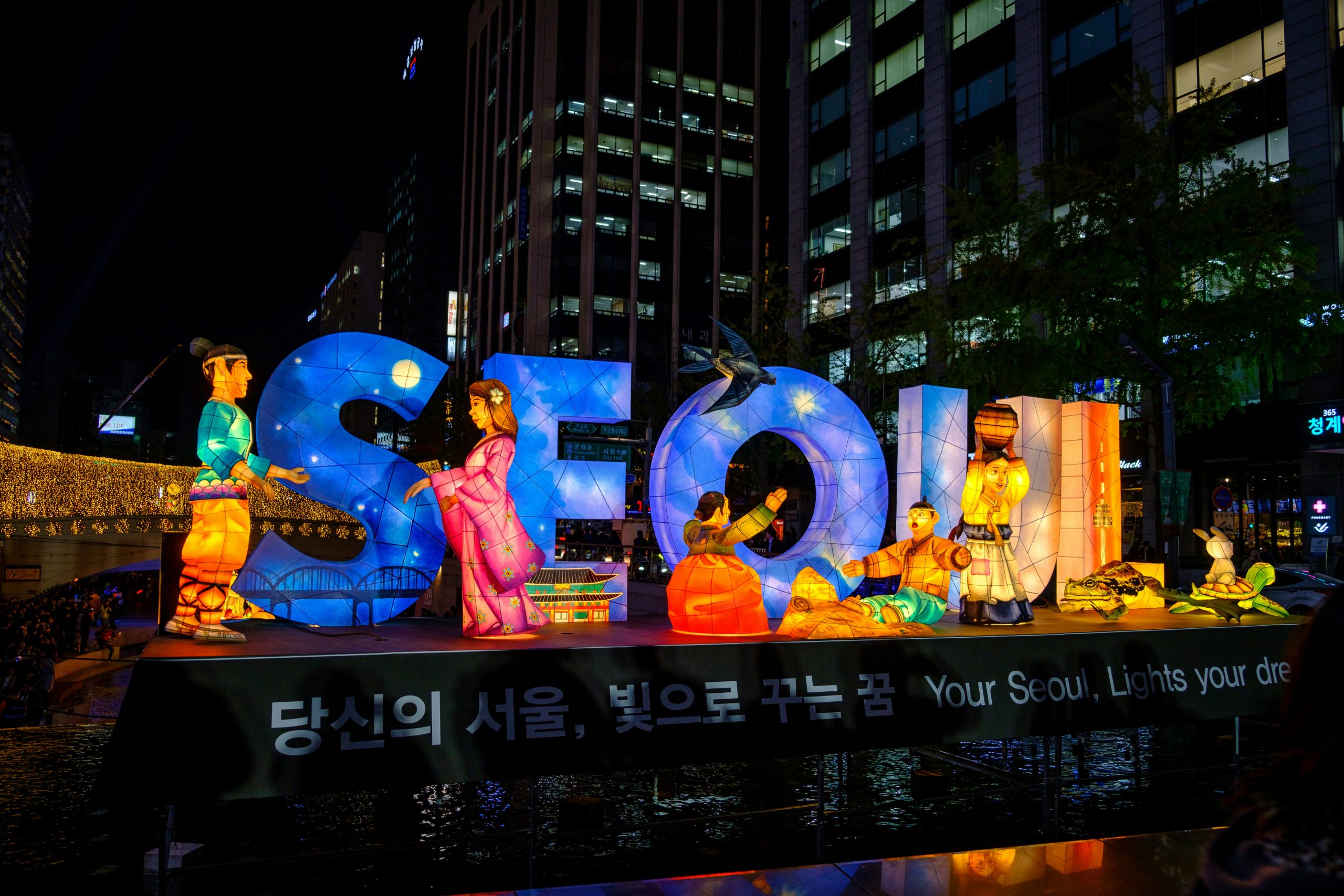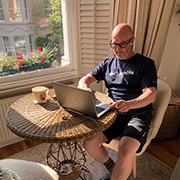
Seoul is one of those cities that hits you with its size straight away. It’s huge, buzzing, and packed with so much to see that it can feel overwhelming if you don’t have a plan. The mix is wild, you have huge shiny skyscrapers on one street, traditional hanok houses on the next, and food stalls around every corner. Seoul, and also South Korea itself has become one of the most popular tourist destinations on the planet.
To make the most of it, I’ve put together a simple “morning, afternoon, evening” plan for three days in the city, that way you can dip into the best bits without getting lost in the noise.
If you really want to see a country and its people, I like to get my boots on, plan it all out and do the trails. Hopefully soon I’ll start to produce a selection of South Korea walks, with start points, downloadable GPX files, places to stay, the lot. Perfect to slot into your Seoul and South Korea itinerary.
If you are also thinking of visiting Japan, and you like to hike, then I have a growing selection here, all contain start points, places to stay, GPX files. Be my guest, take a look, and if you walk these paths, let me know how it went, I love hearing about what you experienced.
Day One in Seoul.
Most travellers arrive by air into Incheon International Airport, the main international airport serving Seoul, the capital of South Korea. It is also one of the largest and busiest airports in the world. Incheon is well connected internationally, and once you’re there, the real magic begins.
Skyscanner is always a great option when looking for the best deals on flights. I use it to compare various airlines, and I tend to book my holiday around the best flight I can get, but I know that’s not always an option.
Morning Day One – Markets & Mountain Views
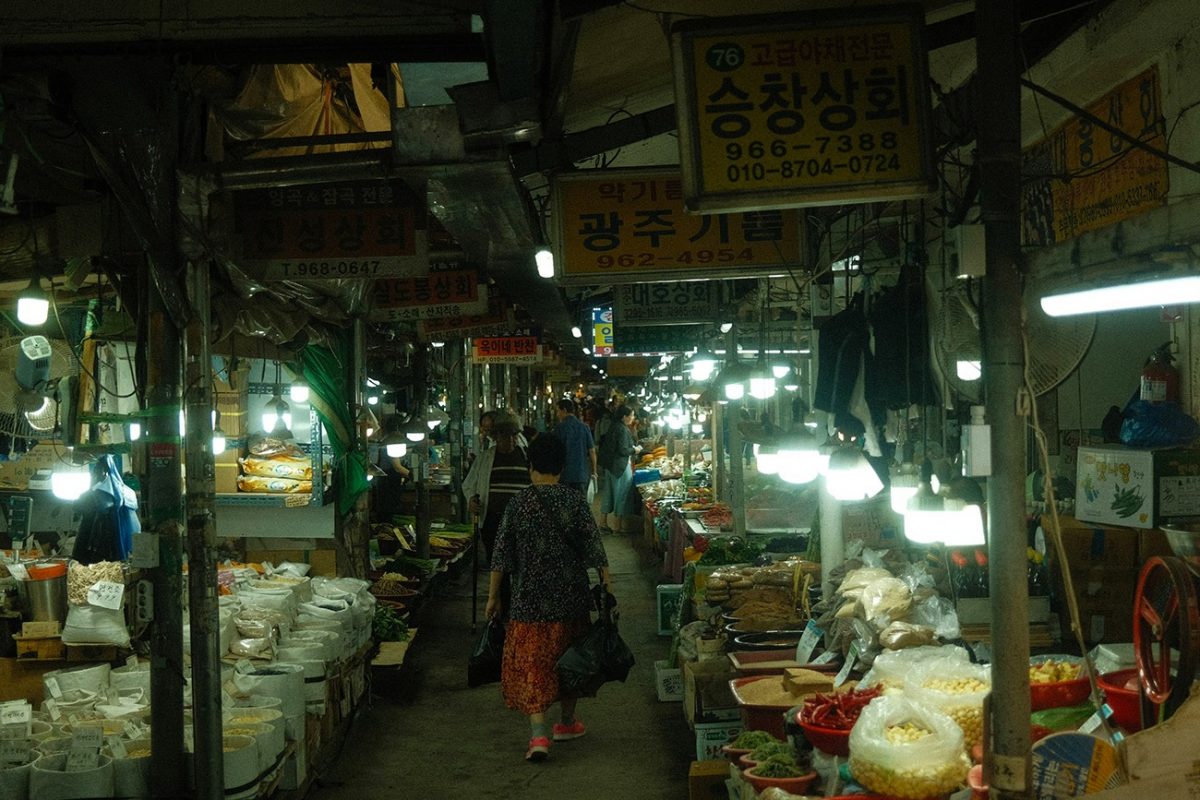
Kick things off at Namdaemun Market, Seoul’s oldest and biggest. It’s a proper maze of stalls selling everything from traditional hanbok clothing to tea, street snacks, and a few things you won’t even recognise. Don’t miss hotteok (sweet pancakes with brown sugar and cinnamon inside) – they’re addictive.
From there, head towards Namsan Park and take the cable car up to N Seoul Tower. The climb is doable, but if you’re saving energy, the cable car makes life easier. At the top you’ll get sweeping views across the city, and it’s much quieter in the morning before the sunset crowds arrive.
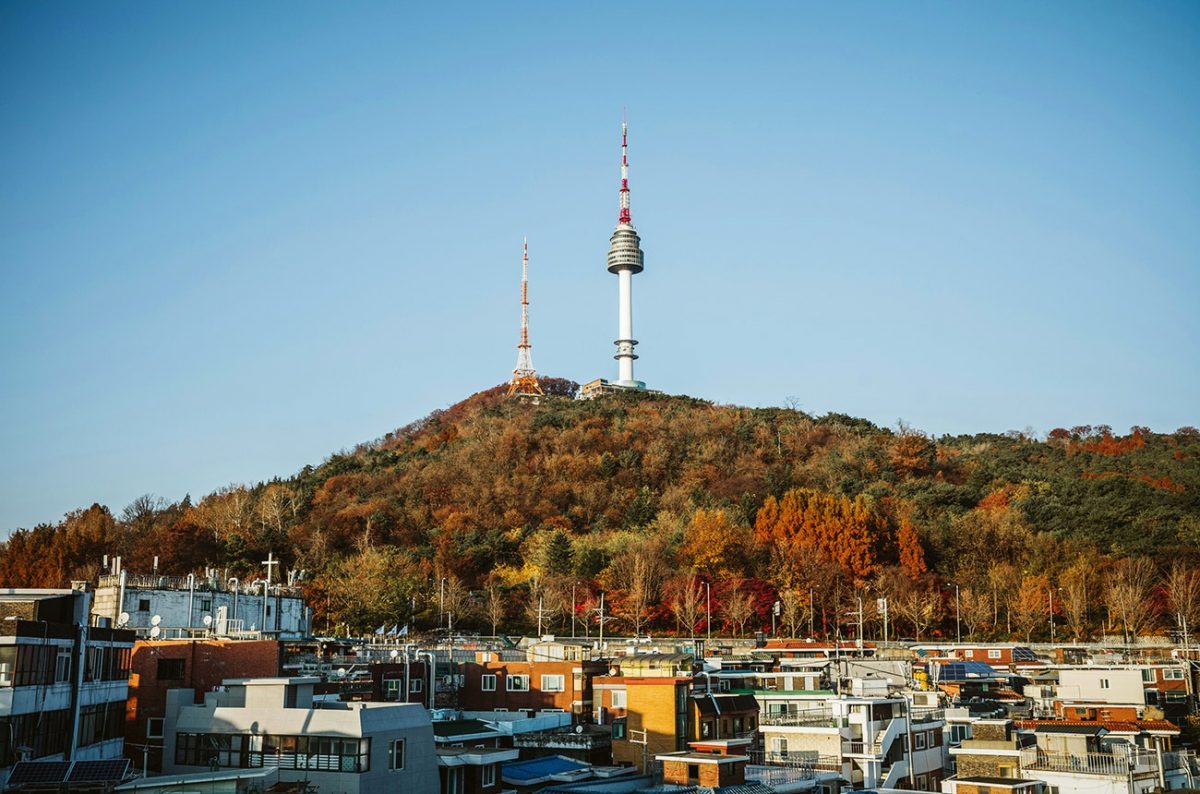
👉 Book a Namsan & Tower experience on GetYourGuide
Afternoon Day One – Shopping & Street Food

Just a short stroll away is Myeongdong, Seoul’s go-to shopping area. Even if you’re not into beauty products, it’s fun to wander the streets, peek into skincare shops, and watch K-pop superfans load up on merch. From late afternoon, the night market takes over – food stalls serving everything from grilled lobster tails to Korean fried chicken.
Grab a quick coffee at one of the quirky cafés (yes, cat cafés and even raccoon cafés exist here), then dive into the street food scene. It’s one of the easiest ways to sample loads of Korean flavours in one go.
👉 Try Korean Cooking at Seoul Cooking Club!
Evening Day One – Temples & a Touch of Luxury

As the day winds down, make your way to Bongeunsa Temple in Gangnam. Lanterns light up around sunset, and the huge Buddha statue makes it a surprisingly peaceful spot right in the middle of a busy district.
To finish the night, you’ve got two options: keep it calm with a Korean spa treatment, or head into Gangnam’s food and cocktail scene. Whether you’re tucking into Korean BBQ or sipping a whisky cocktail, it’s the perfect way to round off your first day.
👉 Gangnam Tour on Youth and Society in South Korea
Where to Stay in Seoul
Seoul has no shortage of accommodation, from budget hostels to luxury hotels. Here are a few solid picks to match different budgets (all easy to book on Booking.com):
- Budget: Hostel Haru – central, clean, and friendly, ideal if you just need a comfy bed while you explore.
- Mid-range: L7 Myeongdong by Lotte – modern hotel right in the shopping district, perfect for food and nightlife.
- Luxury: Four Seasons Hotel Seoul – five-star comfort, world-class restaurants, and a spa that’s worth the splurge.
For a wider choice, Booking.com has a huge variety to browse through.
Day Two in Seoul.
Morning Day Two – Palaces & History
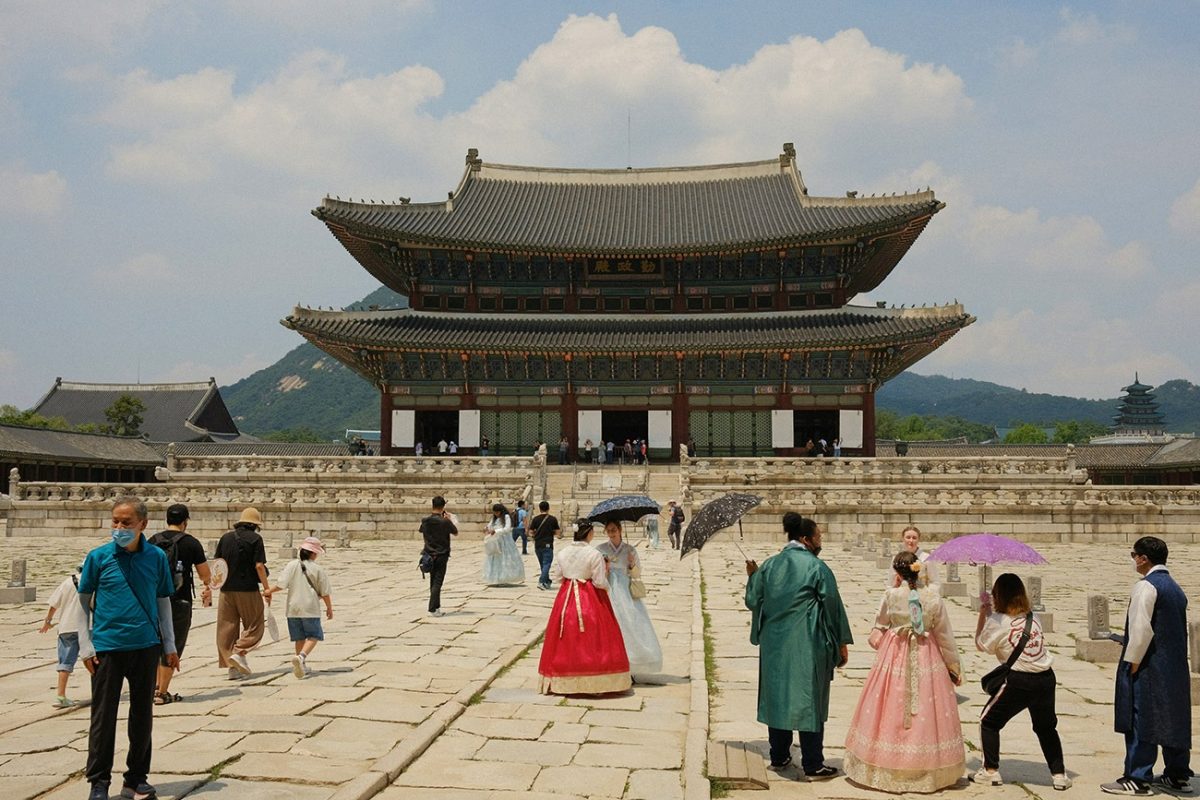
Start the day at Gyeongbokgung Palace, the biggest and most impressive of Seoul’s five grand palaces. The changing of the guard ceremony is worth catching (10 a.m. or 2 p.m.), and the place itself is packed with beautiful gardens, pavilions, and courtyards. It’s also a good chance to rent a hanbok (traditional Korean dress) if you fancy a proper photo moment.
If you’ve still got time, Bukchon Hanok Village is right nearby. The old houses here have been turned into tea rooms, craft shops, and little museums, but it still feels like a step back in time.
👉 Gyeongbok Palace, Bukchon Village, and Gwangjang Tour
Afternoon Day Two – Tea Houses & Local Flavours
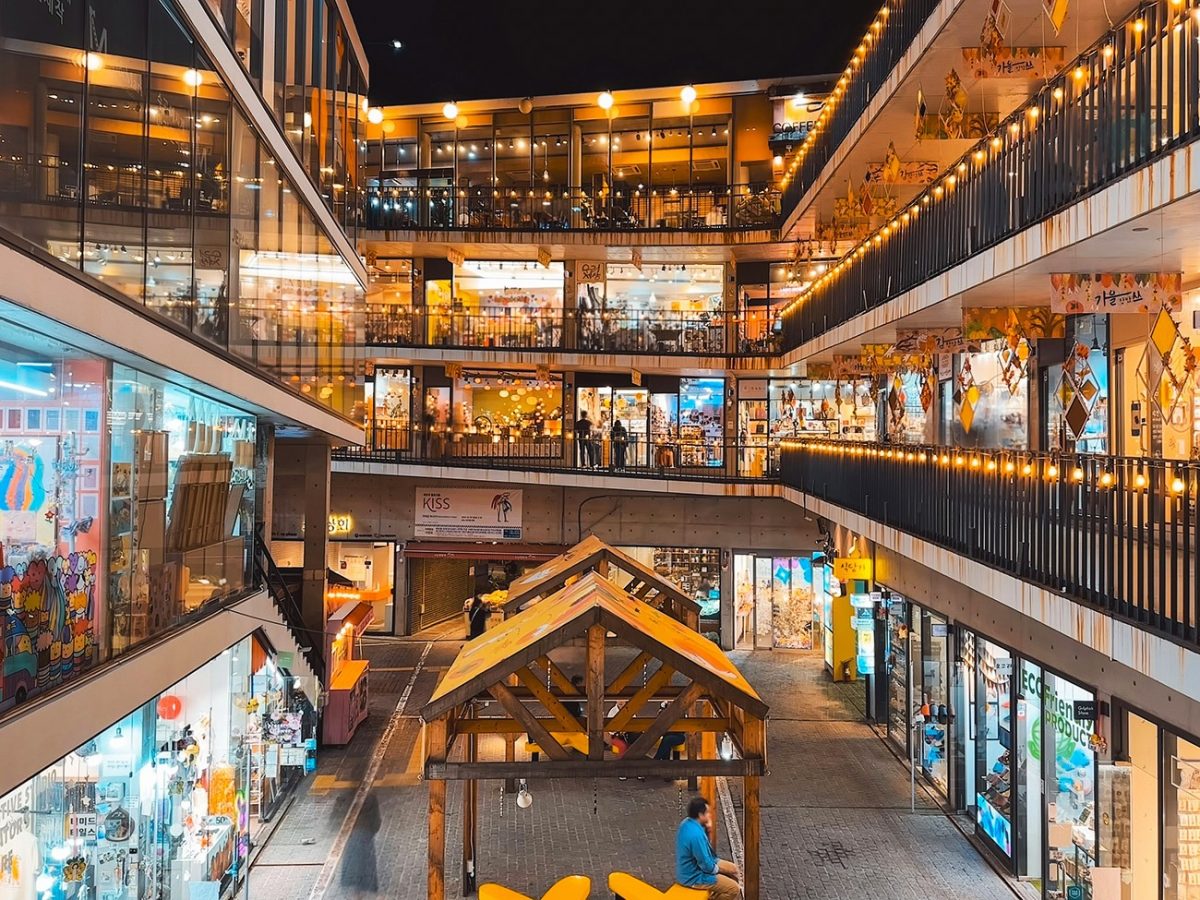
Wander further into Insadong, where you’ll find art shops, tea houses, and plenty of street snacks. Stop for tea in one of the quieter courtyards, the green plum tea or chrysanthemum tea are the big favourites, and then grab dumplings or ramen at one of the cosy restaurants nearby.
This is one of those areas where you don’t have to rush, just let yourself drift down the streets, step into the odd gallery, and soak up the atmosphere, it’s a beautiful area.
👉 DMZ Tour with Optional Suspension Bridge
Evening Day Two – Streamside Strolls & Speakeasies
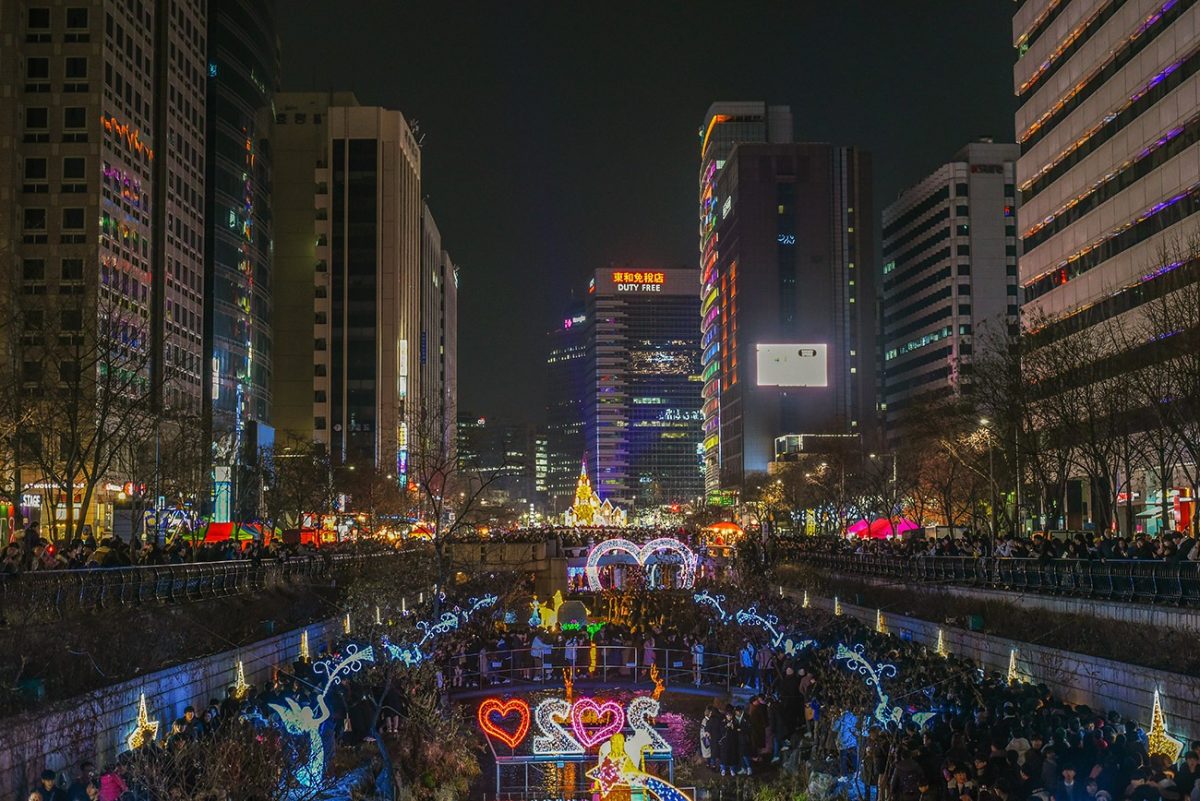
As the sun sets, take a walk along Cheonggyecheon Stream, it runs right through the city and comes alive at night with colourful lights and installations. It’s a popular K-drama filming spot too, so don’t be surprised if it feels familiar.
When you’re ready to eat, head for a hidden cocktail bar or a modern Korean restaurant – Seoul does both incredibly well.
👉 Seoul Night Tour: Gwangjang Market & Naksan Park & Hidden Jems
Day Three in Seoul.
Morning Day Three – Parks & Views
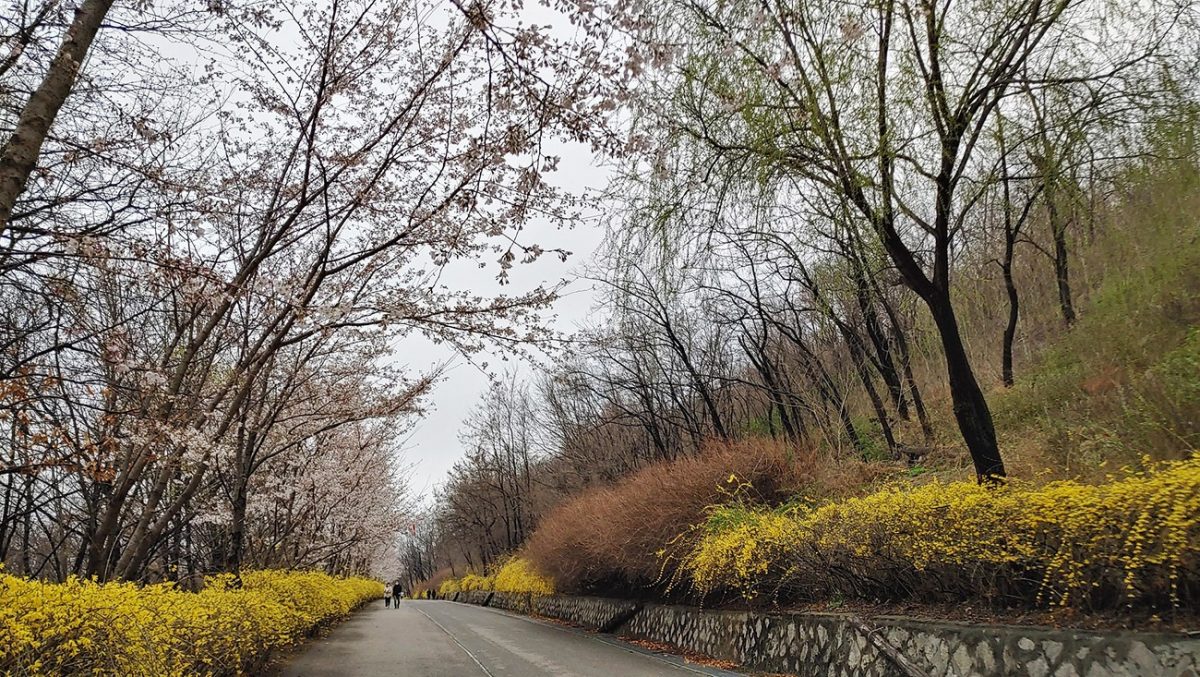
Take a breather from the city rush at Haneul Park. It’s a big green space built on top of an old landfill site (sounds odd, but the transformation is amazing). In autumn, the silver grass fields and golden ginkgo trees make it a picture-perfect walk. The observatory deck gives you a huge panorama of the Han River and the city skyline.
👉 Seoul: Naejangsan National Park Autumn Foliage One Day Tour
Afternoon Day Three – Street Art & Student Energy
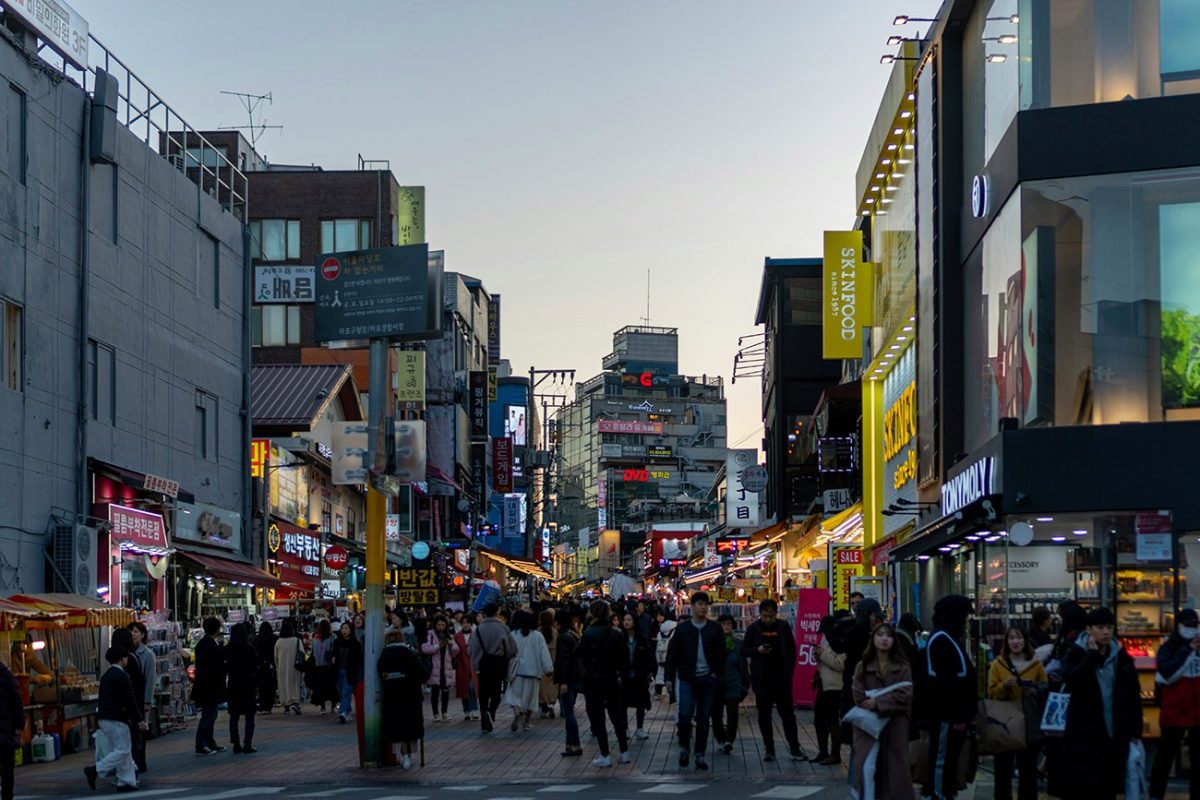
Hop over to Hongdae, a neighbourhood buzzing with students, street performers, and live music. There’s always something happening here – murals, pop-up markets, buskers doing K-pop covers. If you’re here on a weekend, check out the Hongdae Free Market where local artists sell handmade crafts.
Fuel up with Korean BBQ (pork belly and kimchi stew are the classics) or go all-in with fried chicken and beer, Seoul’s ultimate comfort combo.
👉 Seoul: Hongdae, Animation & Game, Theme Cafe Walking Tour
Evening Day Three – Nightlife in Itaewon
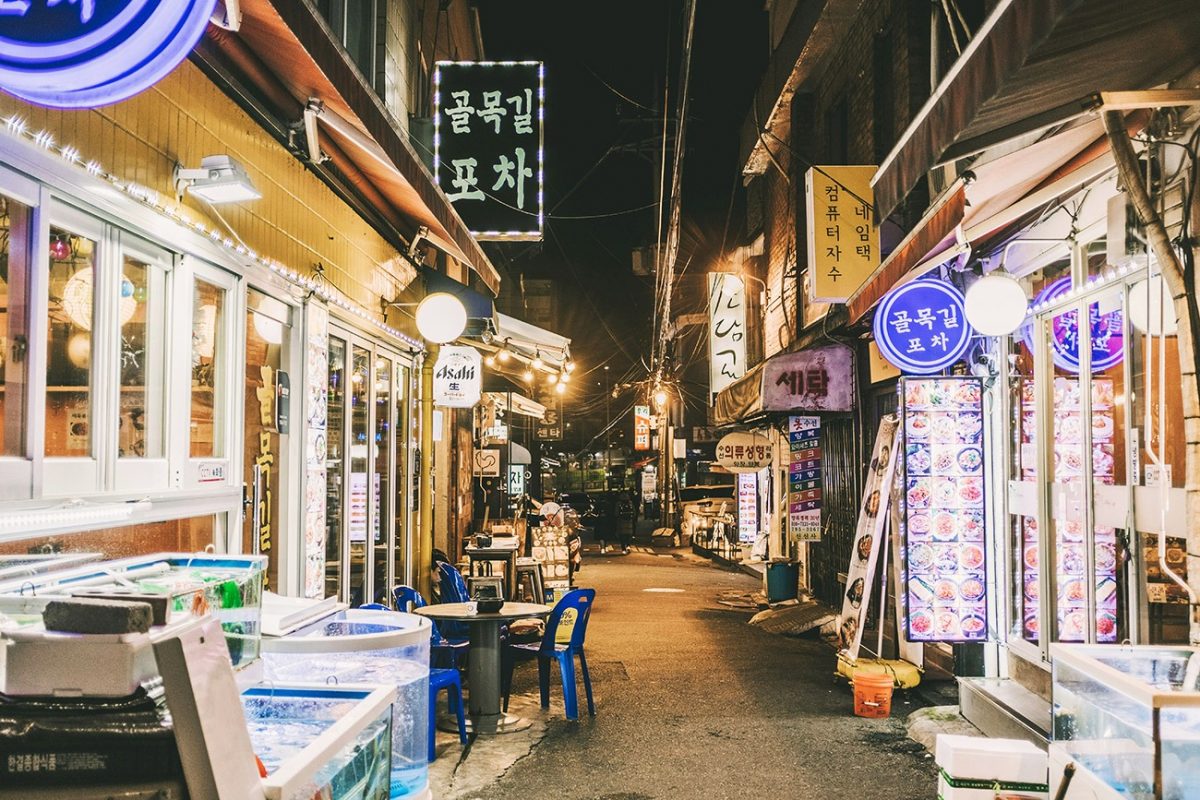
Wrap up your trip in Itaewon, Seoul’s international nightlife hub. It’s got a mix of craft beer bars, live music, LGBTQ+ venues, and clubs that go until sunrise. Start with a pint at a local brewery, grab dinner at a trendy pasta or BBQ spot, and then head to a jazz bar to finish on a high note.
👉 The Seoul Pub Crawl [official]
That’s three days in Seoul, a nice mix of history, food, shopping, temples, nightlife, and green escapes. It’s a city that doesn’t really sleep, so there’s no wrong way to do it, but this plan gives you a little bit of everything without wearing yourself out.
Seoul FAQs
Is 3 days enough for Seoul?
It’s a great starter. You’ll cover the big sights (palaces, markets, N Seoul Tower), dip into food and nightlife, and still have time for a park walk. If you’re into museums or cafés, add a day.
What’s the best way to get around?
The metro. It’s clean, cheap, and easy. Grab a T-money or Cashbee card, top it up, and tap in/out on buses and trains.
When’s the best time to visit?
Spring (Apr–May) and autumn (Sep–Oct) for mild temps and clear skies. Summer is hot/humid; winter is crisp and cold but festive.
Do I need cash?
Cards are widely accepted, but small stalls/markets may prefer cash. ATMs are easy to find.
Is English widely spoken?
At major sights and in shops, you’ll be fine. In local spots, use a few Korean basics and a translation app for menus/signs.
Any tipping culture?
No tipping expected. Some high-end places add a service charge, but otherwise it’s not a thing.
What should I eat first?
Start with hotteok or tteokbokki at the markets, then Korean BBQ or fried chicken with beer in the evening.
Can I use an eSIM in South Korea?
Yes—most newer phones support eSIMs. If not, pick up a local SIM or a pocket Wi-Fi at the airport.
Travel Data: I highly recommend using eSIMs as they are the best and most efficient way to have internet connectivity, removing the hassle of having a physical sim, removing expensive roaming fees and being connected as soon as you land. My favorite eSIM and my personal recommendation are the eSIMs from Sim Local because they are a very affordable option and have great plans in Japan with great speed and amazing coverage in all the country.

Don’t forget your Discount Code, which you can enter at the checkout, it is ‘WELSHMAN‘ and it’s value is 10% off. Click here to go ahead with your eSim for Japan purchase, and copy and paste your code.

Heads up: Some links are affiliate links (e.g., Booking.com). It costs you nothing extra and helps keep these guides free. You can read my review of Sim Local eSim in Japan here + don’t forget your 10% discount.
